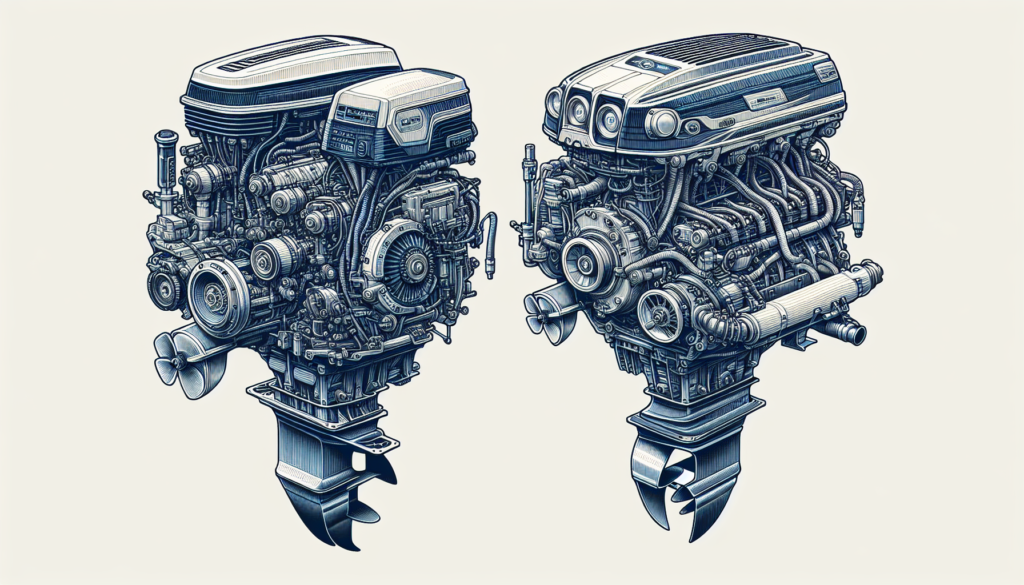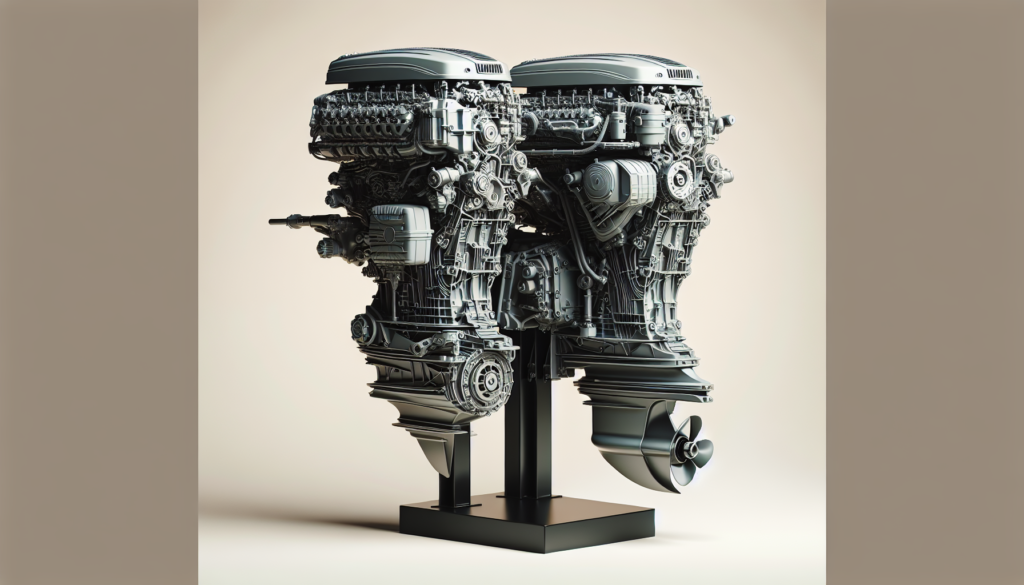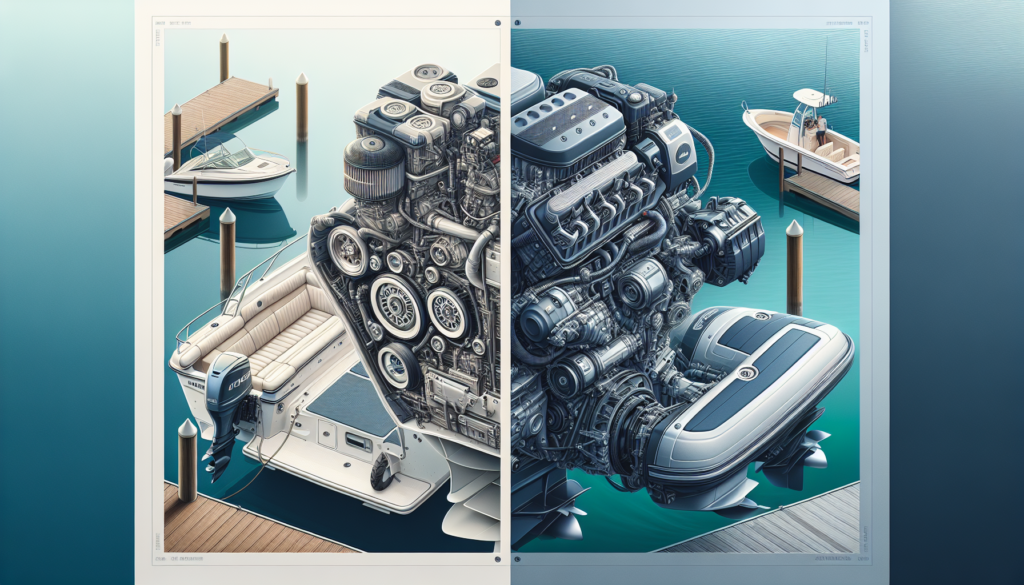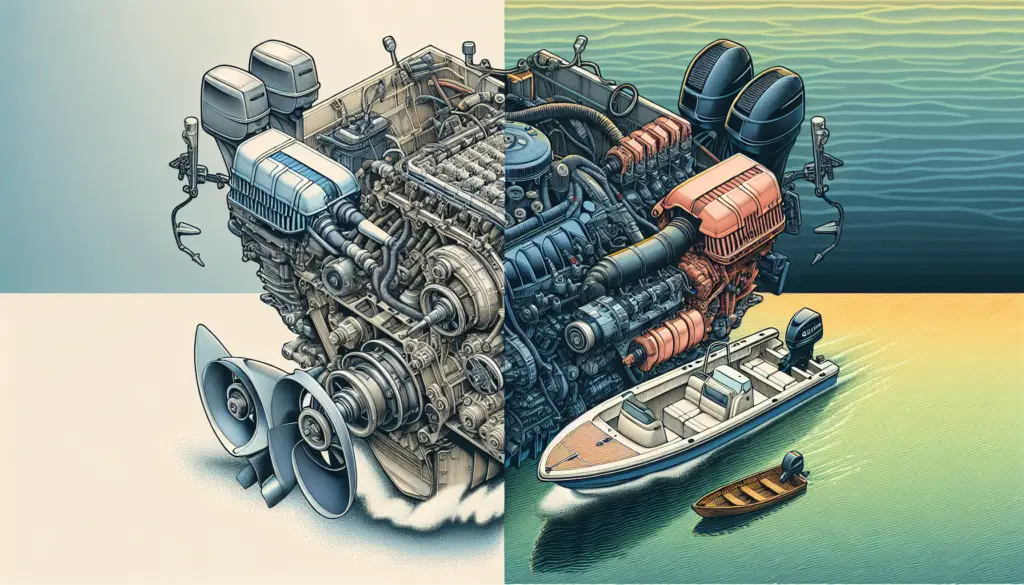Ready to find your perfect boat engine but feeling a bit overwhelmed with the choices? Let’s cut through the confusion and provide clarity by examining the pros and cons of outboard and inboard motors. Whether you’re a seasoned sailor or a novice, this guide “Buyer’s Guide: What To Consider When Choosing An Outboard Vs. Inboard Boat Engine” is about to make your engine selection task a lot easier, offering a comprehensive comparison of these two types of engines, focusing on aspects like performance, maintenance, cost, and more. You’ll gain invaluable insight, empowering you to make an informed decision that fits both your boating needs and your budget.

Understanding Inboard and Outboard Engines
When you are selecting a boat engine, you’re likely to come across two main types – inboard and outboard engines. Just like deciding on a boat, it’s important to know the difference between the two to make an informed decision.
Definition of an inboard engine
An inboard motor is a marine propulsion system for boats. Unlike an outboard engine mounted outside the boat’s hull, an inboard engine is located internally, typically in the middle of the boat. It operates similarly to a car engine but is designed to combat the challenges that come with a marine environment.
Definition of an outboard engine
On the other hand, an outboard motor is a self-contained unit that includes an engine, gearbox, and propeller. It’s mounted on the outside of the transom, making it easy to service or swap. Since it’s located on the exterior of the boat, it doesn’t take away from the boat’s internal space and also provides better maneuverability.
Major differences between the two
The primary distinction between these two types of boat motors revolves around their location and structure. While inboard engines are placed inside the boat, outboard engines are mounted externally. Also, outboards might provide better fuel efficiency and ease of maintenance, but inboards often offer more power and speed.
Factors to Consider When Choosing Between Inboard and Outboard Engines
Choosing between inboard and outboard engines is not simply about speed or power. You must also consider several other factors.
The intended usage of the boat
If your boating plans include water sports or fast cruising, an inboard engine could be your top choice because of its greater horsepower. But if you’re more interested in fishing, sailing or cruising at slower speeds, an outboard motor may serve you better due to their superior fuel efficiency and maneuverability.
The type of water body
Your decision might also depend on the type of water body where you’ll be using the boat most. Inboard engines perform well in saltwater due to their closed cooling systems, while outboards can operate more effectively in shallow waters due to their ability to tilt out of water.
Your budget
Budget is where outboard engines shine. They usually cost less than their inboard counterparts—both in initial purchase and maintenance. However, if you can afford it, inboards offer more power which can be an essential factor for some boaters.
Maintenance requirements
Outboard engines are typically easier to maintain than inboard engines because of their external placement which facilitates easy access.
Performance and Speed
Performance and speed are crucial aspects you need to consider when choosing between inboard and outboard engines.
Speed capabilities of inboard engines
Inboard engines are known for their powerful performance and generally can push boats to higher speeds than outboard motors due to their high horsepower.
Speed capabilities of outboard engines
While the top speed of outboard motors might be lower than that of inboards, newer, larger outboards are narrowing this gap. They are also known for their quicker acceleration from a standing start.
Factors affecting performance
When it comes to performance, it’s not always just about the engine. The boat’s hull design, weight, and size also greatly impact a boat’s performance and speed.
Installation and Maintenance
No matter which type of engine you choose, knowledge of installation and maintenance processes is essential.
Installation process for inboard engines
Installing an inboard engine can be complex and is often best left to professionals. It involves mounting the motor in a specific place inside the boat and linking it to a propeller via a driveshaft.
Installation process for outboard engines
In comparison, mounting an outboard motor is relatively straightforward. Because it’s a self-contained unit, it can often be installed or replaced by the boat owner.
Routine maintenance requirements
Both engines require regular maintenance, such as oil changes and inspections. However, outboard engines typically require less frequent and more affordable maintenance compared to inboards.

Fuel Efficiency and Environmental Impact
Consideration of fuel efficiency and its environmental impact is another significant aspect of choosing between inboard and outboard engines.
Fuel consumption of inboard engines
Inboard engines are often less fuel-efficient than outboards. That’s because they are larger and more powerful and hence consume more fuel.
Fuel consumption of outboard engines
Outboard motors generally offer better fuel efficiency, especially the newer models with direct injection systems. This not only reduces your fuel costs but also means fewer emissions and a smaller environmental footprint.
Environmental concerns
In light of increasing awareness about environmental concerns, you might want to consider newer model outboard engines. With advancements in technology, outboard engines have improved drastically in terms of emissions and fuel efficiency.
Ease of Control and Maneuverability
An engine’s control and maneuverability significantly influence the boating experience.
Handling and control of inboard engines
Inboard engines often offer smooth and responsive handling at high speeds. They require a rudder for steering and hence might require a bit of getting used to.
Handling and control of outboard engines
With outboard motors, you get the advantage of easy maneuvering, especially at low speeds. They are straightforward to steer as the entire motor turns and directs the boat.

Cost Consideration
The overall costs of owning a boat are impacted by the type of engine you choose.
Initial purchase price of an inboard engine
Inboard engines tend to be more expensive to purchase initially, due to their larger size and higher power output.
Initial purchase price of an outboard engine
Buying an outboard engine is typically less pricey than purchasing an inboard motor. However, this will largely depend on the size and type of outboard motor you choose.
Long-term cost implications
Other than the upfront cost, consider the long-term spending. Although inboards have a higher initial cost, maintaining an outboard might be more expensive in the long run if you heavily use and frequently replace it.
Reliability and Lifespan
The longevity and reliability of the engine are crucial to ensure an enjoyable boating experience.
Expected lifespan of an inboard engine
Inboard engines typically have a longer lifespan than outboards, primarily if used and maintained correctly. Some inboards can offer years of reliable service.
Expected lifespan of an outboard engine
On the downside, outboard motors usually have a shorter lifespan than inboards due to their exposure to the elements. However, newer models are increasingly durable and reliable.
Key reliability factors
Remember that proper maintenance and how you use the boat can significantly affect the engine’s lifespan, regardless of its type.

Noise and Vibration
Noise and vibration levels can significantly impact the comfort and enjoyment of your boating experience.
Noise output from an inboard engine
Inboard engines are typically quieter than outboard motors thanks to their internal placement inside the boat. This can make for a more enjoyable and peaceful ride, especially on longer trips.
Noise output from an outboard engine
Outboard engines are generally noisier due to their external placement. However, newer models have made strides in reducing noise output.
Vibration and its effects
Regardless of whether you choose inboard or outboard, both can produce some level of vibration. It’s essential to ensure adequate insulation and mounting systems to minimize this effect for a more comfortable ride.
Safety and Stability
Finally, safety and stability are of utmost importance when on the water.
Safety features of inboard engines
Inboard motors incorporate several safety features. The engine’s placement inside the boat reduces the risk of propeller strikes, and the cooling system lowers the engine’s operating temperature, creating a smaller risk of overheating.
Safety features of outboard engines
Safety with outboard motors lies in their simplicity. There’s less risk of getting stuck on the water due to engine failure as you can easily swap them out. Furthermore, they can be completely lifted out of the water, reducing the potential for damaging strikes.
Stability comparison between the two
In terms of stability, both engines have their strengths – the weight of an inboard lowers the boat’s center of gravity, enhancing stability. In contrast, outboards allow for better weight distribution, improving the boat’s balance.
In conclusion, choosing between an inboard and outboard engine largely depends on your specific boating needs, preferences, and budget. Each has its strengths and weaknesses, and it’s essential to consider these and how they fit into your boating plans. Whichever you decide, happy boating!

